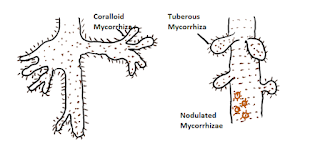Angiosperms Pollination
Introduction: In this chapter, Angiosperms Pollination, we will discuss in detail. Theophrastus described on Date palm pollination. The role of insects in pollination was described by Kolreuter. Transfer of pollen to stigma is known as Pollination.
 |
| Image: Angiosperm pollination |
- The transfer of microspore (pollen grain) anther to megasporophyll (stigma) means pollen grain transfer to female via external agents known as pollination.
- Pollen grains are motionless themselves, which means they require external agents for transference.
- Pollination occurs by water, air, animals, and other gravity factors.
- Types of Pollination: Self and Cross-pollination.
- Pollen grains transfer to genetically related flowers.
- Types of Self Pollination: autogamy and geitonogamy.
 |
| Image: Homogamy A- Catharanthus, B- Mirabilis jalapa, C- Potato, D, and E- Sunflower |
- Homogamy pollination: This pollination occurs in the same flower. Anthers and stigma come together during maturity, in chasmogamous flowers. Examples: Potato, Mirabilis, etc.
- Cleistogamy pollination: Anthers and stigma are closed in cleistogamous flowers. Anther dehisces in the closed flower. External agencies are not required for this pollination. Examples: Oxalis, Balsam, etc.
- Bud pollination: In this pollination, before the opening of buds in the flower, anther and stigma are ripen. Examples: wheat and rice.
- It protects the maintenance of parental characters.
- Plants do not need to produce a huge amount of pollen grains.
- Removes recessive characters.
- Vitality decreases.
- Immunity decreases.
- Variability reduce.
- These flowers are small in size.
- flowers do not contain color.
- Non-essential parts are not present.
- Stamens are more in number.
- Pollen grains are light in weight.
- Pollen grains are dusty.
- Pollen grains are nonsticky.
- Pollen grain formed in huge numbers.
- Approx. 130 million pollen grains formed by Mercurialis annua.
- Stigma is feathery.
- Anemophily is nondirectional.
 |
| Image: Anemophily |
- Flowers are small in size.
- Flowers are inconspicuous.
- Nectar is not present.
- Odour is also absent.
- Pollen grains are light in weight.
- Hypohydrophily and epihydrophily are types of hydrophylly.
- Zostera occurs below the water surface i.e., hypohydrophily.
- Vallisneria occurs on the water surface i.e., epihydrophily.
- It is Seagrass.
- Zostera does not contain exine.
- Long stigma is present.
- Pollens contains ribbon like structure.
- Pollens are filamentous.
- Contain the same gravity.
- It is a submerged plant.
- Pollen's structure is rounded.
- pollens do not contain exine.
- Male and female flowers are present on the same plant.
- Stigma is sticky.
- Produce a huge number of male flowers.
- It contains two fertile stamens.
- The female flower consists long stalk.
 |
| Image: Hydrophily pollination (Vallisneria) |
- Most birds, bats, and insects play important role in this pollination.
- Bees and butterflies perform pollination activities.
- Insects can be wasps, bees, and butterflies for pollination.
- Bees take nectar and pollen grains from flowers.
- They are colored.
- Butterflies attract red flowers.
- Corolla, sepals, and bracts contain bright colors.
- Some flower emits an odor.
- The flower contains nectar.
- Some flowers contain edible pollens.
- Pollen grains are covered by pollenkitt.
- Heavy pollen grains are present in these flowers.
- pollination occurs directional.
- Sticky stigma is present.
- Stigma is found inserted.
- Anthers are usually inserted.
- When two species interact with each other and one species forms modification and the other species forms capacity to adaptability.
- This modification formed in the two species i.e., coevolution.
- Mutation and natural selection help in coevolution.
- Insect pollinated flowers are rich in nectar.
- The birds having long beaks.
- Tropicals are sunbirds and hummingbirds.
- They are less as compared to others.
- Red silk cotton, Bottlebrush, Agave, etc. are pollinated by birds.
- Ornithoflowers: Contains highly nectar, flowers are highly bright-colored, the scent is not present and the shape of corolla is a funnel.
- They contain dull colors.
- Nectar is present in a high amount.
- Pollens are also in high amounts.
- The Flowers' size is large.
- Introduce variations by cross-pollination.
- Increment of adaptability.
- Diseases resistant varieties are formed.
- New varieties are formed.
- Defective characters are removed.
- Yield is also high by cross-pollination.
- A high amount of pollen grains are waste by this pollination.
- Undesirable characters are formed.
- Good characters can be spoiled.
|
Self-pollination |
Cross-pollination |
|
Transfer of pollen to the stigma of a similar flower. |
Transfer
of pollen to the stigma of a different flower. |
|
This pollination can occur in closed flowers. |
This
pollination occurs in only open flowers. |
|
External agencies are not required. |
External agencies are necessary. |
|
They
produce pure lines. |
They formed variations. |
|
Yield can fall with time. |
Yield not fall below average. |
|
New
varieties not produce. |
New
varieties are produced. |



















































